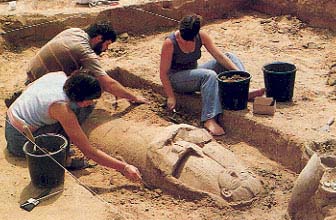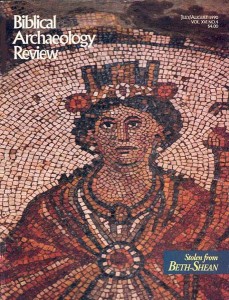Glossary: Coffins in a Human Shape
A short history of anthropoid sarcophagi

“Anthropoid coffin” refers to an ancient burial container shaped in the form of a human body. Although the stylized facial features carved, molded, or painted on these coffins were usually intended only to symbolize the appearance of the deceased, realistic portraits were sometimes attempted—especially in later examples. This class of burial artifacts, known from Egypt, Israel, Jordan and Lebanon, offers an illustration of a cultural tradition that lasted, with modifications, for almost 3,000 years.
The earliest examples of anthropoid coffins are the elaborate royal “mummy cases” of the Egyptian XIIth Dynasty (c. 1991–1786 B.C.). Bearing the image of the departed member of the royal family, they were initially carved from stone, though during the New Kingdom period (c. 1567–1085 B.C.) they were fashioned from a variety of materials, including wood, cartonnage (thick, glued layers of linen or papyrus) and gold (in the most elaborate royal examples, such as the inner coffin of King Tutankhamun). Their use reflected the growing power of the cult of Osiris, the ruler of the Egyptian afterworld, who was himself commonly depicted in the form of a mummy.
Already a library member? Log in here.
Institution user? Log in with your IP address.

